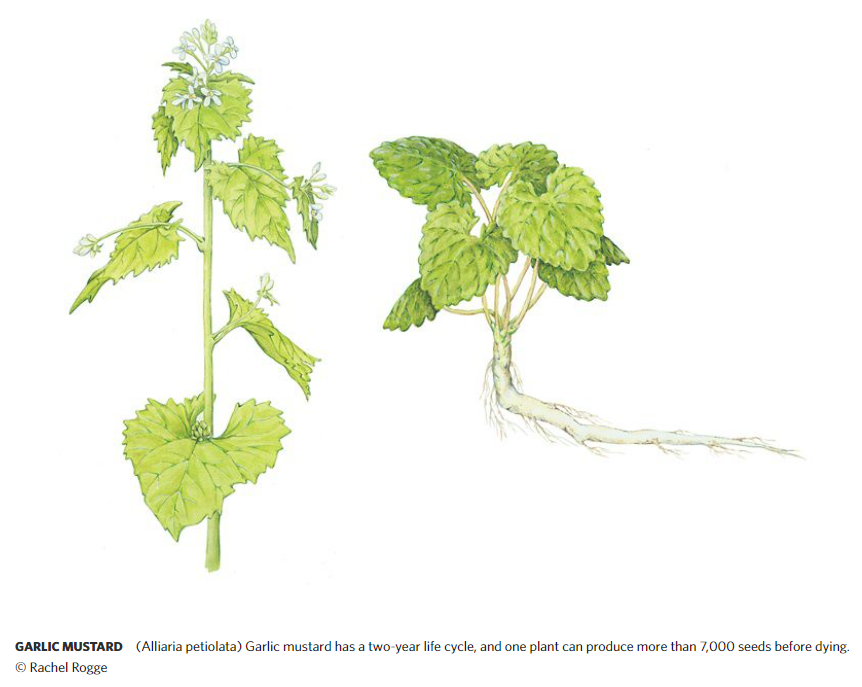By Brenna DeNamur, DNR Forest Health Outreach Specialist, Madison, Brenna.DeNamur@wisconsin.gov; Jaqi Christopher, DNR Forest Invasive Plant Specialist, Rhinelander, Jacquelyn.Christopher@wisconsin.gov; & Mary Bartkowiak, DNR Forest Invasive Plant Coordinator, Rhinelander, Mary.Bartkowiak@wisconsin.gov
Spring is here! Invasive plants, like garlic mustard, are often among the first green life to emerge in the new season.
Garlic mustard is an aggressive invasive species that can blanket a forest and outcompete native vegetation. It releases chemicals into the soil that prevent other plants from growing too close. These chemicals can disrupt associations between mycorrhizal fungi and native plants, thereby suppressing plant growth.
Garlic mustard grows in two life stages (biennial). As shown below, the leaves grow as basal rosettes, or small heart-shaped leaves close to the ground, in its first year. In its second year, mature flowering stems develop. Garlic mustard leaves have a strong garlic fragrance.
The substantial number of seeds produced by a single garlic mustard plant also contributes to its ability to outcompete other plants. Garlic mustard seeds also remain viable in the soil for years.

Garlic Mustard (Alliaria petiolata) Garlic Mustard has a two-year life cycle, and one plant can produce more than 7,000 seeds before dying. Photo: Rachel Rogge
Luckily, there are solutions to take out this persistent plant. The most common management techniques for garlic mustard include hand pulling and chemical control.
The Midwest Invasive Plant Network provides a guide for those interested in garlic mustard management on their property. It can feel like a daunting task to control the species on your property, but early detection can make a big difference. Set a goal for yourself to prevent plants from flowering. This will help you get ahead of it setting seed.
So, get out there! Take a walk through your woods to look for this early emerging invasive.


